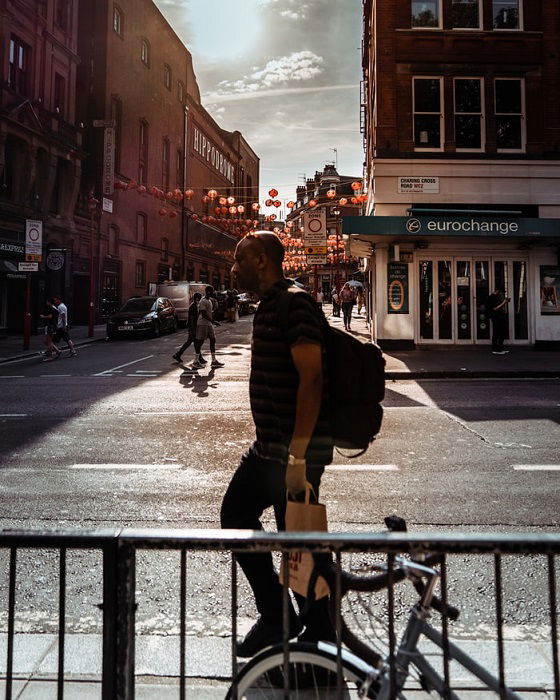Some Known Questions About Street Photographers.
Table of ContentsThe 3-Minute Rule for Street Photographers10 Easy Facts About Street Photographers ExplainedSome Known Facts About Street Photographers.Some Ideas on Street Photographers You Need To KnowFacts About Street Photographers Revealed
A category of photography that documents day-to-day life in a public location. The very publicness of the setup allows the professional photographer to take candid pictures of unfamiliar people, commonly without their knowledge. Road photographers do not always have a social function in mind, but they favor to isolate and capture minutes which might or else go unnoticed (Street Photographers).He was affected by many of those who affected the road professional photographers of the 1950s and '60s, he was not primarily interested in capturing the spirit of the street., that functioned side by side with photographers attempting to record the essence of metropolitan life.
Due to the somewhat primitive modern technology available to him and the long direct exposure time required, he struggled to catch the pressure of the Paris roads. He trying out a series of photographic techniques, trying to locate one that would certainly allow him to capture motion without a blur, and he discovered some success with the calotype, patented in 1841 by William Henry Fox Talbot. As opposed to Atget, photographer Charles Marville was hired by the city of Paris to produce an encyclopaedic file of Haussmann's metropolitan preparation task as it unravelled, hence old and brand-new Paris. While the digital photographers' topic was basically the very same, the outcomes were markedly different, showing the influence of the digital photographer's bent on the personality of the photos he generated.
Offered the great top quality of his photos and the breadth of product, designers and artists typically got Atget's prints to utilize as recommendation for their own work, though commercial passions were rarely his major inspiration. Instead, he was driven to photograph every last residue of the Paris he enjoyed.
Little Known Facts About Street Photographers.
They expose the city through his eyes. His job and fundamental understanding of digital photography as an art type served as ideas to generations of professional photographers that followed. The following generation of road digital photographers, though they likely did not describe themselves as such, was introduced by the photojournalism of Hungarian-born photographer Andr Kertsz.
Unlike his peers, Brassa used a larger-format Voigtlnder cam with a longer exposure time, compeling him to be much more computed and thoughtful in his practice than he could have been if using a Leica. (It is believed that he might not have had the ability to afford a Leica during that time, but he did, nevertheless, make use of one in the late 1950s to take colour photos.) Brassa's pictures of the Paris underworld lit up by fabricated light were a revelation, and the collection of the collection that he published, (1933 ), was a major success.
Cartier-Bresson was a champ of the Leica camera and one of the very first digital photographers to maximize its abilities. The Leica enabled the professional photographer to engage with the surroundings and to catch minutes as they took place. Its relatively small size likewise assisted the digital photographer discolor right into the background, which was Cartier-Bresson's preferred method.
Little Known Questions About Street Photographers.
It is since of this essential understanding of the art of photo taking that he is typically credited with uncovering the medium all over once more about a century considering that its creation. He took photos for more than a half century and resource influenced generations of digital photographers to trust their eye and intuition in the moment.
These are the questions I shall try to respond to: And then I'll leave you with my very own interpretation of road digital photography. Yes, we do. Let's begin with defining what a definition is: According to (Street Photographers) it is: "The act of defining, or of making something definite, distinctive, or clear"
No, most definitely not. The term is both restricting and misleading. Appears like a road photography need to be photos of a roads ideal?! And all street digital photographers, besides a little number of outright novices, will totally appreciate that a road is not the essential part to road digital photography, and really if it's a photo of a road with possibly a couple of uninteresting people doing absolutely nothing of interest, that's not road photography that's a snapshot of a road.
Some Known Factual Statements About Street Photographers
He makes a legitimate point don't you assume? While I concur with him I'm not certain "honest public digital photography" will certainly capture on (although I do kind of like the term "candid photography") because "street photography" has been around for a lengthy time, with lots of masters' names affixed to it, so I think the term is below to remain (Street Photographers).
Inside?! I hear you shout as you shake your hand to the skies. Why not? You can contend the coastline, at an event, in a street, in a park, in a piazza, in a coffee shop, at a gallery or art gallery, in a city terminal, at an occasion, on a bridge, under a bridge ...

How Street Photographers can Save You Time, Stress, and Money.

Comments on “The 5-Minute Rule for Street Photographers”